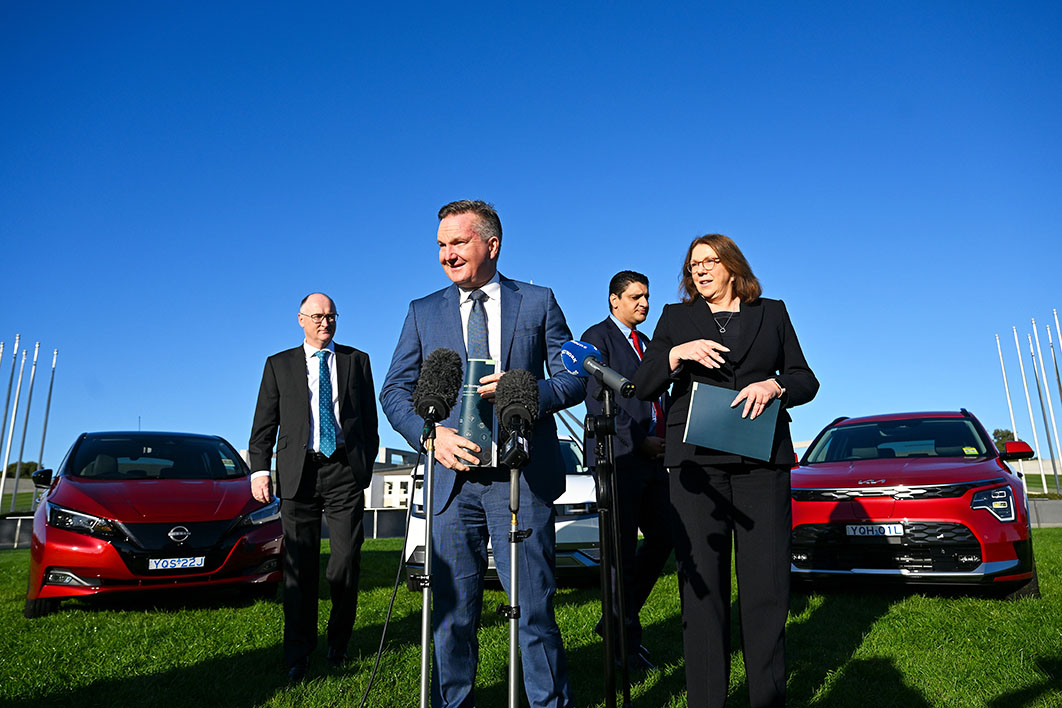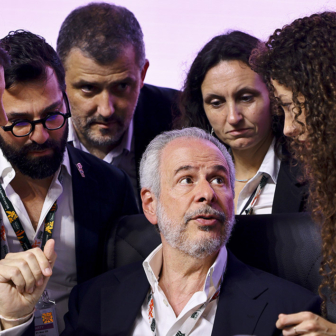The latest report from the IPCC makes for grim reading. The consequences of global heating are arriving much sooner than expected, and with greater severity, and carbon-based fuels are being used in record quantities. Is there any hope of stabilising global temperatures?
A closer look reveals grounds for optimism in relation to coal, the most polluting of all carbon-based fuels. With the important exception of China, construction of coal-fired power stations has virtually ceased. Coal-fired power is already in decline in most developed countries, notably including the United States. The brief bounce in Europe following the closing of Russian gas pipelines has already ended.
According to the International Energy Agency, solar PV and wind are meeting nearly all of the growth in global electricity demand. Solar cell production is expected to increase, as is the installation of wind power following Europe’s removal of a variety of planning restrictions.
If new solar PV and wind supply more electricity at zero marginal cost than is needed to meet increased demand, they will inevitably displace coal and gas generation. Existing plants must either run at lower capacity or else be scrapped. Since China is pushing ahead fast on solar PV, it is likely that many of the coal plants being constructed at the moment will become stranded assets.
All this suggests that global carbon dioxide emissions from electricity generation will peak soon. But electricity accounts for only around a third of all carbon dioxide emissions. Transport’s energy transition is much less advanced, and that’s particularly the case with cars. The vast majority of cars on the road rely on internal combustion engines.
Demand for road travel and for motor vehicles certainly dropped sharply during the lockdown phase of the pandemic. As with most other things, though, demand bounced back as restrictions were lifted.
But this bounce obscured the fact that sales of internal-combustion vehicles had peaked even before the pandemic. A study by Bloomberg found that sales of petrol- and diesel-fuelled cars (including sales of traditional hybrids like the Toyota Prius) peaked at eighty-six million units in 2017, a year in which only one million battery-electric and plug-in hybrid vehicles were sold.
In 2022, by contrast, sales of internal-combustion vehicles fell to sixty-nine million but plug-in hybrids and battery electrics rose about ten million. With the cost of batteries falling steadily and more models coming on to the market, these trends are unlikely to reverse. Importantly, and unlike coal-fired power, China has been a leader in the transition to electric vehicles, which have already captured more than a quarter of the market there.
Declining sales of internal-combustion vehicles don’t translate immediately into a smaller number on the road. This will only happen when the number of new cars falls below the number being scrapped. Most of the cars being retired now were built ten to twenty years ago, when sales were still rising. It’s for this reason that Bloomberg estimates the number of internal-combustion vehicles on the road to remain roughly constant for the next few years before starting to decline in earnest from 2026 onwards.
Defenders of the internal-combustion engine point to a variety of obstacles to a rapid transition. The most notable are the higher initial cost of electric vehicles and the limited availability of charging stations. Neither of these objections stand up to scrutiny.
The lifetime cost of an electric vehicle, taking account of lower maintenance and running costs, is already below that of comparable internal-combustion vehicles. And, with battery prices falling, the initial cost differential is also declining.
As for charging, the technology is far less complex than the process of fuelling an internal-combustion vehicle. Electric vehicles don’t require the elaborate chain from oil wells to refineries to specially constructed service stations.
The simplest solution, for most users, will be to charge overnight at home or during the day at a parking lot or parking garage. Plug-in hybrids can be charged overnight with an ordinary trickle charger. A normal home EV charging station, sufficient to charge a fully electric vehicle overnight, will cost between $1000 and $3000.
Rapid charging at service stations is also technologically simple, even if somewhat more expensive. The availability of such stations will readily increase in line with the growth in the electric vehicle fleet.
Against this background, US president Joe Biden’s new target — electric vehicles making up 50 per cent of sales by 2030 — seems eminently feasible. A question for the longer term is how we can get post-2030 internal-combustion vehicles off the road in time to achieve net zero emissions by 2050. Given that a large proportion of vehicles run for twenty years or more, this won’t happen automatically.
One possibility is a version of the “cash for clunkers” scheme introduced in the United States and briefly proposed by the Gillard government in Australia. The US scheme involved subsidising people who traded in old gas-guzzlers and bought more fuel-efficient alternatives. The inadequately funded scheme — undermined by a complex and arbitrary set of rules about which cars could be traded in, which replacements were eligible and how the money was disbursed — was wound up fairly quickly.
A similar scheme to get internal-combustion vehicles off the road need not face the same difficulties. Once the sale of new petrol- and diesel-driven vehicles ended, complex trade-in requirements would be unnecessary; instead, a simple cash payment would be made for old vehicles. The scheme could be self-financing, with increased registration charges or petrol taxes also raising the cost of continuing to operate an internal-combustion vehicle.
As with the energy transition in general, the technological problems of a shift to electric vehicles have mostly been solved. The remaining questions are those of policy design and political will.
Unfortunately, that’s exactly what still seems to be lacking in Australia. The Labor government’s electric vehicle strategy, announced this week, included a series of small-scale initiatives but no target dates or specific goals. It committed the government to developing a fuel-efficiency target that would presumably increase demand for electric vehicles, but gave no specifics, despite already having a plan on its books prepared by the Climate Change Authority under the Turnbull government.
On this, as on many other aspects of climate policy, Australia remains an international laggard. Neither of our major political parties seems much interested in changing that.
Fortunately, the rest of the world is acting. Internal-combustion vehicles are being abandoned by most major carmakers. If government action doesn’t drive the shift to electrics, technological obsolescence will do the job sooner or later. •




